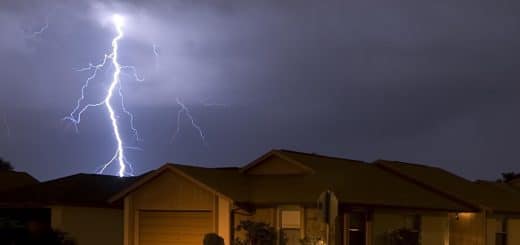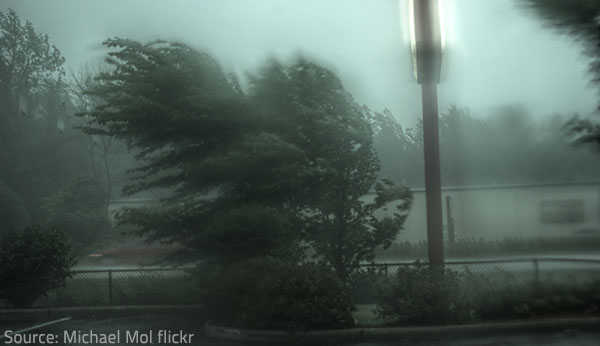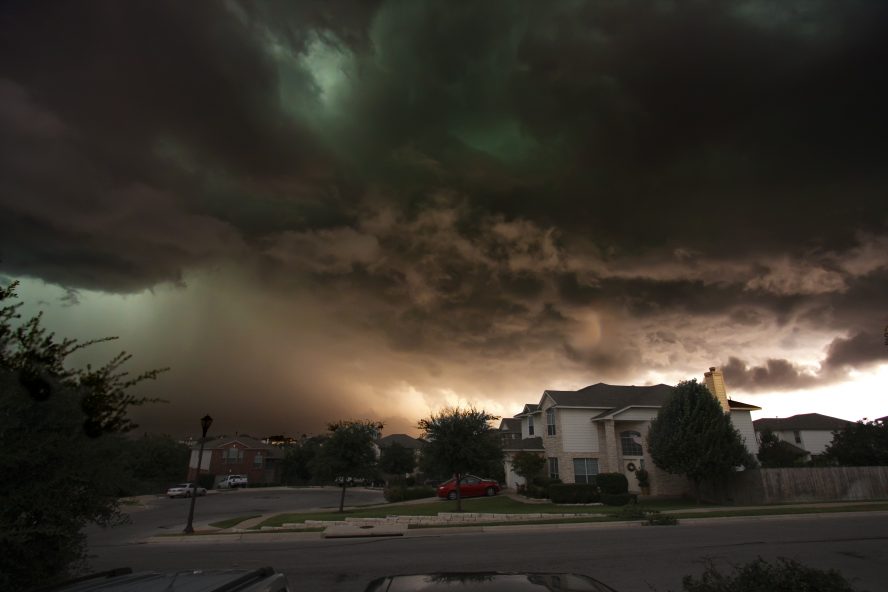Embrace the Season Safely: Your Comprehensive Guide to Winter Storm Preparedness
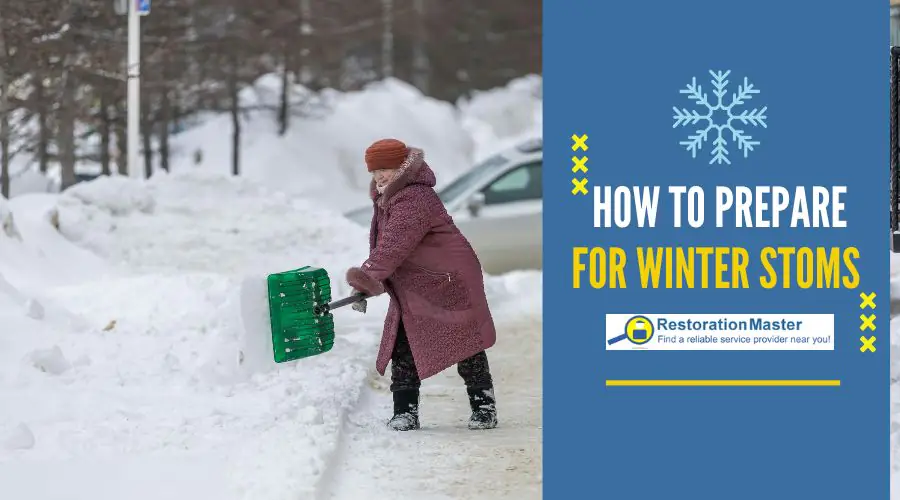
As the days grow shorter and a crisp chill fills the air, we’re gently reminded that winter is fast approaching. According to the National Oceanic and Atmospheric Administration (NOAA), severe winter weather impacts millions of Americans each year and is responsible for billions of dollars in damages—along with over 100 tragic fatalities. While winter brings a magical charm with its snow-covered landscapes and festive holiday spirit, it also introduces a host of challenges that can disrupt our lives, jeopardize our safety, and put our homes at risk. Being well-prepared for winter storms isn’t just smart—it’s essential.
In this guide, we’ll walk you through the vital steps you need to take to safeguard your home and loved ones from the harsh realities of winter storms. From understanding the different types of winter weather to assembling a reliable emergency kit, read on for practical tips and fresh insights to help you confidently welcome the winter season.
Understanding Winter Storms
Winter storms come in various forms, each with its own set of challenges:
- Blizzards: These are fierce storms characterized by heavy snowfall, winds often exceeding 35 miles per hour, and dramatically reduced visibility. Blizzards can render roads impassable and create life-threatening conditions.
- Ice Storms: Marked by freezing rain that coats everything in a dangerous layer of ice, these storms can cause power outages, disrupt transportation, and make even a short walk treacherous.
- Snowstorms: While often seen as the classic winter weather event, heavy snow accumulation can quickly lead to hazardous travel conditions, unexpected road closures, and the need for intensive snow removal efforts.
Key Fact: Recent studies show that winter storms are among the costliest natural disasters in the United States, with some storms causing upwards of $10 billion in damages when accounting for lost productivity, road repairs, and emergency services.
Knowing what type of storm you’re likely to face—based on your region’s climate and historical data—is the first step in tailoring your preparedness plan.
Creating Your Winter Storm Preparedness Plan
A well-thought-out plan is your best defense against the unpredictable challenges of winter storms. Here’s how to create one:
Assess Your Risks
Identify your area’s specific vulnerabilities. If you live in a region prone to heavy snowfall or frequent blizzards, anticipate the possibility of power outages, road closures, and the risk of frozen pipes or roof leaks.
Family Communication Strategy
- Designate a Main Contact: Choose one person to coordinate communication if family members become separated.
- Set Up Emergency Contacts: Keep a list of local authorities, emergency shelters, and even water damage restoration experts on hand.
- Establish a Meeting Spot: Agree on a safe meeting location in case you’re forced to evacuate or get separated.
Map Out Evacuation Routes
Familiarize yourself with local shelters and plan alternative routes in case of road closures. Being aware of your surroundings ensures you’re ready to act swiftly if needed.
Assembling a Winter Storm Emergency Kit
An emergency kit is a lifeline during severe winter weather. Here’s what to include:
- Food & Water:
Stock up on non-perishable items like canned goods, energy bars, dried fruits, and nuts. Aim for at least one gallon of water per person per day, with a minimum supply for three days. - First Aid Supplies:
Ensure your kit contains bandages, antiseptics, pain relievers, scissors, tweezers, and any necessary prescription medications. - Warm Clothing & Bedding:
Pack extra layers such as hats, gloves, scarves, thermal socks, and blankets. Sleeping bags or extra bedding can be crucial if heating becomes an issue. - Flashlights & Batteries:
Power outages are common during winter storms, so keep a reliable flashlight, a battery-powered or hand-crank radio, and plenty of spare batteries on hand. - Special Items:
Don’t forget the needs of infants, the elderly, and pets. This might include diapers, formula, extra medications, pet food, and comfort items.
Pro Tip: Review and update your kit every six months. Expired food, outdated medications, or broken equipment could leave you vulnerable when you need your kit the most.
Preparing Your Home for Winter
Protecting your home is a crucial aspect of winter storm preparedness:
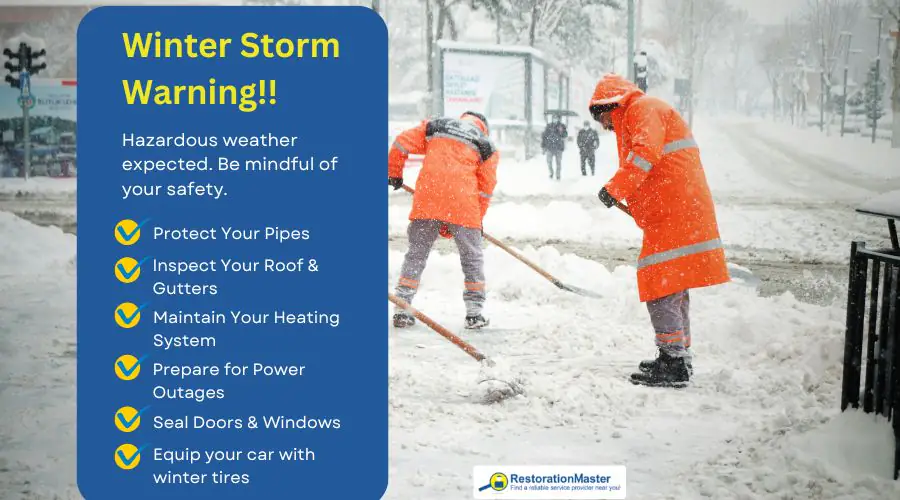
- Seal and Insulate:
Use weather stripping or caulk to seal gaps around windows and doors. Adding insulation to attics, walls, and crawl spaces can help your home retain heat more efficiently. - Protect Plumbing:
Exposed pipes are susceptible to freezing and bursting. Insulate them with pipe insulation or heat tape, and let faucets drip during extremely cold periods to prevent ice buildup. - Roof and Gutter Maintenance:
Clear out gutters to prevent ice dams from forming, and inspect your roof for loose shingles or potential leak points. - Heating Alternatives:
Ensure your heating system is in good working order with a pre-winter maintenance check. Consider having a portable space heater or even a wood-burning stove as a backup, but always follow safety guidelines when using alternative heat sources. - Vehicle Preparedness:
Equip your car with winter tires and assemble a car emergency kit that includes a shovel, ice scraper, jumper cables, blankets, and non-perishable snacks. Keep your gas tank at least half full to prevent fuel line freezing.
Staying Informed: Weather Alerts & Community Resources
Knowledge is power when it comes to weather emergencies:
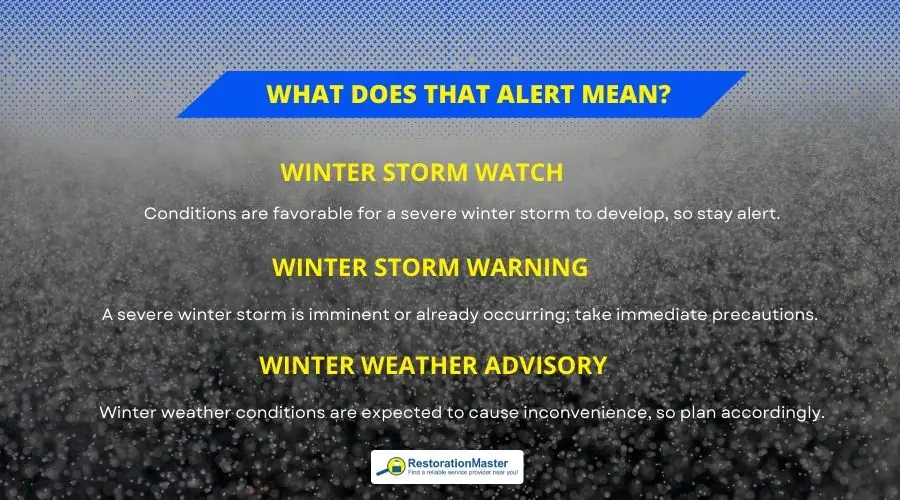
- Monitor Weather Forecasts:
Regularly check reliable sources for weather updates. Consider using weather apps that offer real-time alerts for your area. - Emergency Notification Systems:
Sign up for local alerts from your city or county emergency management office. These notifications can provide timely updates on road closures, shelter availability, and other critical information. - Community Support:
Know your neighbors and offer help to those who might need extra assistance, especially the elderly or people with mobility issues. A strong community network can make a big difference during severe weather.
What to Do When the Storm Strikes
When winter storms hit, swift and informed action is key:
- Stay Indoors:
Avoid unnecessary travel and remain indoors until authorities declare it safe to go out. If you must venture outside, dress warmly and be cautious of icy surfaces. - Conserve Resources:
Use your emergency kit sparingly, and avoid opening refrigerators and freezers frequently to keep food cold longer during power outages. - Check on Neighbors:
Look out for vulnerable community members by checking in on them and offering assistance if needed. A little neighborly help can go a long way in a crisis. - Drive with Caution:
If you must drive, ensure your vehicle is fully cleared of snow and ice. Drive slowly, brake gently, and keep a safe distance from other vehicles to avoid accidents.
After the Storm: Recovery and Reflection
Once the worst of the storm has passed, it’s time to assess and recover:
- Inspect Your Home:
Check for any structural damage, such as roof leaks or fallen tree branches, and address them immediately. Document any damage with photos for insurance claims. - Replenish Your Supplies:
Restock your emergency kit with fresh supplies and replace any items that were used or have expired. - Reflect and Improve:
Use the experience as an opportunity to evaluate your preparedness plan. Consider what worked well and what could be improved for future storms. Small adjustments now can lead to better outcomes in the future. - Professional Assistance:
If you encounter significant damage, especially water damage or structural issues, don’t hesitate to contact restoration professionals. Their expertise can help restore your home and prevent further complications.
Call Professionals To Address Winter Storm Damage
In conclusion, a complete winter checklist will be your best ally in preparing for the challenges that winter storms may bring. Thus, it is necessary to start preparing one for yourself immediately. We’re already in Fall and Winter is just two months away.
In this article, we have covered some important tips, from assembling an emergency kit to insulating your home and staying informed, which can help you stay safe and warm this winter. Remember, it’s not just about staying safe; it’s about having the peace of mind that comes with being prepared.
Also, in the event that winter storm damage occurs, don’t forget that restoration professionals are here to help. Whether it’s structural damage or water damage, they have the expertise to bring your property back to its pre-damaged condition. So, be proactive, take action, and embrace the winter season with confidence, knowing that you’re prepared for whatever challenges it may bring.










